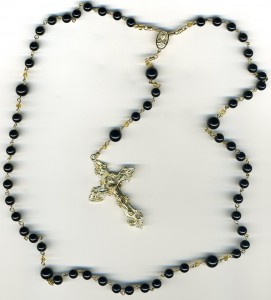The Indulgences that are “given out” by the Catholic Church are greatly misunderstood by non-Catholics and Catholics alike.
As the Church handles indulgences today, they are defined by “The Handbook of Indulgences – Norms and Grants” as:
“An indulgence is the remission in the eyes of God of the temporal punishment due to sins whose culpable element has already been taken away. The Christian faithful who are rightly disposed and observe the definite, prescribed conditions gain this remission through the effective assistance of the Church, which, as the minister of redemption, authoritatively distributes and applies the treasure of the expiatory works of Christ and the saints.”
The question is asked by many Protestant Christians as to where the Catholic Church thinks it has such power to do this. The answer is in the Bible. Let us look at this in some detail.
First we will go to Matthew 6:17-19:
17 Jesus said to him in reply, “Blessed are you, Simon son of Jonah. For flesh and blood has not revealed this to you, but my heavenly Father. 18 And so I say to you, you are Peter, and upon this rock I will build my church, and the gates of the netherworld shall not prevail against it. 19 l will give you the keys to the kingdom of heaven. Whatever you bind on earth shall be bound in heaven; and whatever you loose on earth shall be loosed in heaven.”
At this time Jesus gave Simon a new name Peter (the Rock), and then gave him the Keys of the Kingdom of Heaven to open or close the gates as needed, as well as the power to bind our sins or release us of our sins.
At this point the contention is that Jesus died for our sins so we do not need to be bound or released by man, as Jesus already has. Yes, Jesus died for our sins. But this means that even though we are still sinners, if we follow His Commandments, have faith in Him, become Baptized by water in the Trinity and “eat His Body and drink His Blood” (John 6:53), our sins are forgiven and we MAY make it to Heaven.
At all times through the Bible, sins had to be “paid for”, often in suffering and hardship. We are told that only the holy in spirit and body may go to Heaven, and that the gates are narrow. So we must atone for our sins, and the Catholic Church teaches, through tradition and the Old Testament, that this is done through a cleansing process we call Purgatory for lack of another name. This is a time of temporal punishment to remove the stain of sins we commit so as to allow us to go into Heaven and behold our Lord and Savior, as impure things and beings may not enter into Heaven.
After Jesus is Crucified and came back to the Apostles and Disciples we hear Him tell all of His Apostles (John 20:21-23) “21 Jesus said to them again, “Peace be with you. As the Father has sent me, so I send you.” 22 And when he had said this, he breathed on them and said to them, “Receive the holy Spirit. 23 Whose sins you forgive are forgiven them, and whose sins you retain are retained.” ” Thus giving the Apostles the ability to bind and unbind us from our sins. We are told that we are released from our sins with the Death of Jesus, and that is true, but we are not released from the effects of those sins, and that requires further pardoning by God or His Disciples, whom He has granted permission to do so.
Related Posts
- 31Over the years I have heard many Protestants say that the only way to Heaven is through Faith, and that the Catholic Church says the only way to Heaven is through works. Let us look at the Faith only first. In Gal 2:1 we read in NABR: 16 n[yet] who know…
- 27One of the issues I had early on in life and most Protestants still have is the perceived way the Catholics deal with Saints. Early on, this was a factor for me that kept me away from the Catholic Church and from looking at it seriously. I felt that instead…
- 23Since 1506 or there abouts the Catholic Church has been given a bad rap by many people. Since the founding of the United States, the Catholic Church in the United States has gotten an even worse rap. We are constantly told that we are not Christian. I beg to differ. …
- 23Yep, more changes in my life! I am in the first stages of moving fully into the life of a Diocesan Hermit. By that I mean, I am living the Rule of life, but must live it for six month to two years under Private Vows at which time, if…
- 23Over the last few years I have heard complaints of people calling Catholic Ministers Priest and Father. To be honest, before I came to understand the reasoning for calling a Catholic Minister Father, I had a problem with that title myself. After extensive research into this, I am more than…
